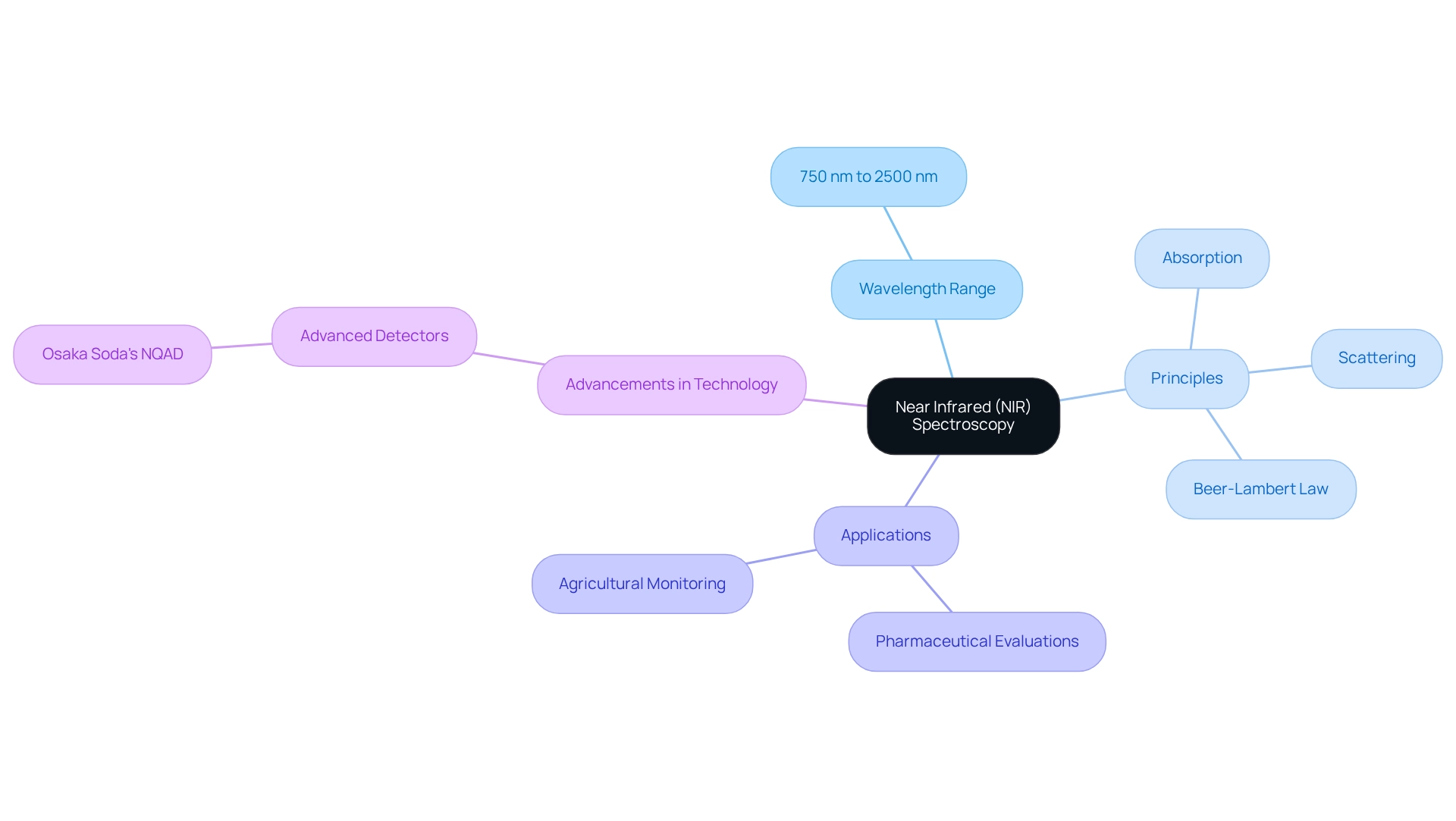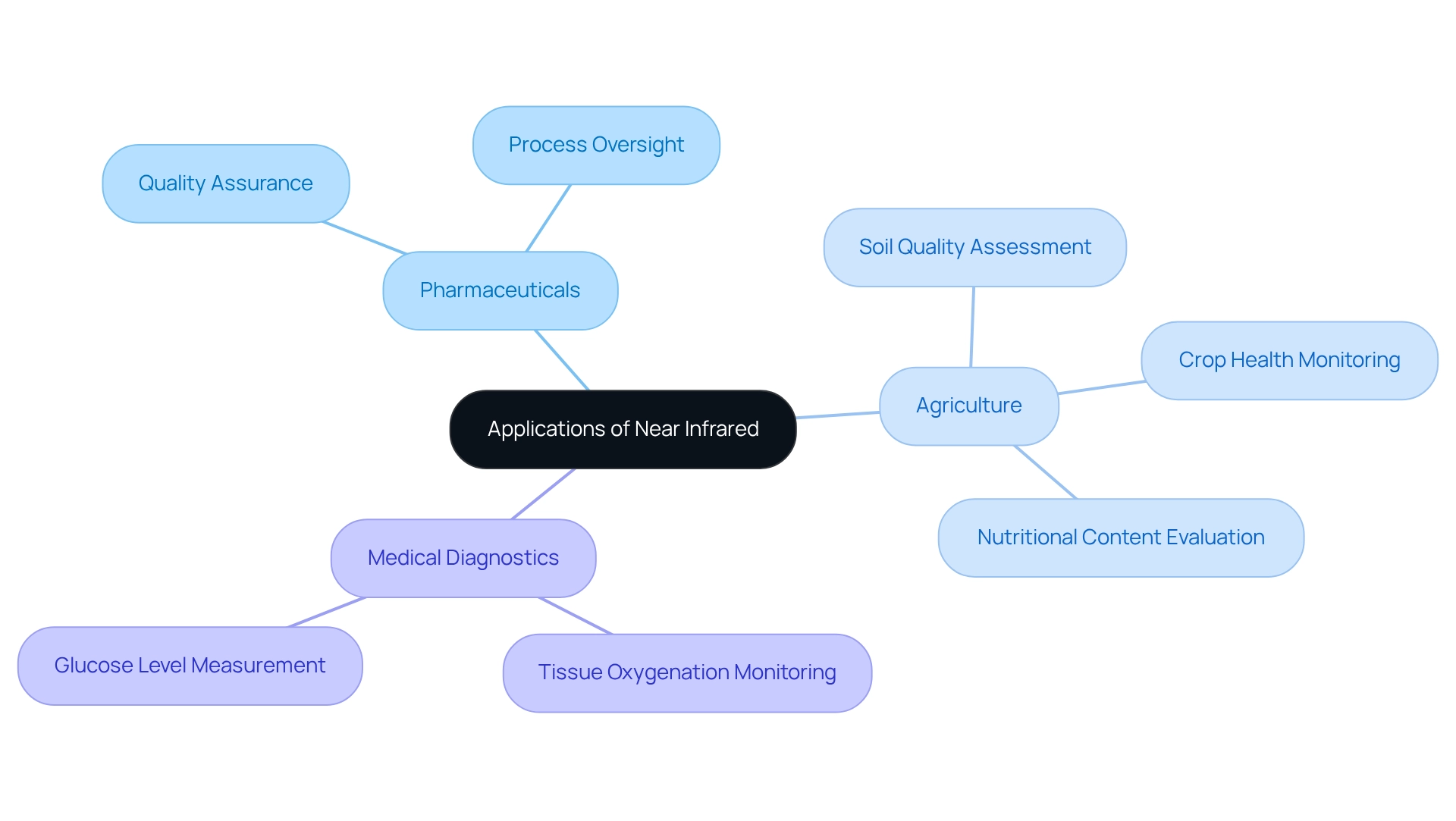Overview
This article delves into the techniques, applications, and challenges of near infrared (NIR) spectroscopy, underscoring its critical importance across various scientific and industrial domains. It elucidates the foundational principles of NIR, exploring its wide-ranging applications in:
- Pharmaceuticals
- Agriculture
- Medical diagnostics
Furthermore, it delineates best practices for addressing challenges such as:
- Calibration drift
- Data interpretation
In doing so, the article provides a comprehensive overview of NIR's pivotal role in enhancing analytical capabilities, thereby reinforcing the necessity for high-quality scientific instruments in laboratory settings.
Introduction
In the realm of analytical science, near infrared (NIR) spectroscopy emerges as a powerful tool, with applications that span various industries. By harnessing the unique properties of the electromagnetic spectrum, NIR provides invaluable insights into chemical compositions and processes. Its versatility is evident, from ensuring quality control in pharmaceuticals to monitoring crop health in agriculture, fundamentally reshaping how data is collected and interpreted.
However, the successful implementation of NIR techniques necessitates a deep understanding of its principles, methodologies, and the challenges that may arise. This article delves into the core aspects of near infrared spectroscopy, exploring its principles, applications, and best practices for overcoming potential obstacles, ultimately underscoring its significance in modern science and industry.
Define Near Infrared: Principles and Characteristics
The segment of the electromagnetic spectrum known as near IR (NIR) ranges from approximately 750 nm to 2500 nm. This range is particularly significant as it includes the overtone and combination bands of molecular vibrations, essential for a variety of analytical applications.
NIR spectroscopy is grounded in the principle that different chemical compounds exhibit distinct absorption and scattering of light near IR wavelengths. Here, the Beer-Lambert Law plays a vital role, indicating that the absorbance of light is directly proportional to both the concentration of the absorbing species and the path length of the light traversing the sample.
Understanding these principles is fundamental for accurately interpreting NIR data and applying it effectively in practical scenarios, such as pharmaceutical evaluations or agricultural monitoring.
Moreover, the integration of advanced detectors, such as Osaka Soda's NQAD, significantly enhances the selectivity and sensitivity of NIR evaluations. This advancement enables more precise identification of components that conventional methods might overlook.

Explore Applications of Near Infrared in Science and Industry
Near infrared spectroscopy (NIR) boasts a diverse array of applications, especially in near IR, across multiple sectors, underscoring its significance in modern science. In the pharmaceutical sector, it serves a critical role in quality assurance and process oversight, enabling real-time evaluation of both raw materials and finished goods. This capability not only enhances product integrity but also streamlines production processes.
In agriculture, NIR technology is employed to assess soil quality, monitor crop health, and evaluate the nutritional content of food products, particularly near IR, thereby contributing to improved agricultural practices and food safety.
Furthermore, near IR technology is increasingly utilized in medical diagnostics, particularly for non-invasive monitoring of tissue oxygenation and glucose levels, which is vital for patient care. Its ability to provide rapid, accurate results positions NIR as an invaluable tool in both research and industrial settings, facilitating advancements across various scientific fields.

Implement Near Infrared Techniques: Setup and Methodologies
To successfully apply near IR techniques, it is essential to first select the appropriate near IR spectrometer that is tailored to the specific application and material type. The setup generally encompasses several critical steps:
-
Specimen Preparation: It is vital to ensure that specimens are representative and prepared in accordance with the evaluation requirements. This may necessitate grinding solid materials or diluting liquids to achieve the desired consistency, particularly for applications near IR. Developing a calibration model with known standards is crucial for correlating NIR spectra with specific chemical properties. This step underpins quantitative evaluation, ensuring that measurements are both accurate and reliable.
-
Data Acquisition: The sample must be placed in the spectrometer to initiate measurement. It is imperative to optimize the instrument settings—such as wavelength range and resolution—tailored to the evaluation at hand.
-
Data Analysis: Employing software tools to analyze the spectral data is essential. Applying chemometric methods near IR will facilitate accurate interpretation of results, often involving multivariate techniques to extract meaningful insights from complex datasets. Validation against known standards or utilizing cross-validation techniques is necessary to ensure both accuracy and reliability of the findings. By adhering to these steps, users can effectively leverage the capabilities of NIR spectroscopy in their analytical endeavors.

Address Challenges in Near Infrared Applications: Best Practices and Solutions
While near ir spectroscopy presents numerous advantages, it is not without its challenges. Understanding these common issues and implementing best practices can significantly enhance the reliability of your applications, particularly near ir, as specimen variability is a notable concern where variations in specimen composition can lead to inconsistent results. To mitigate this, ensure thorough mixing and employ representative sampling techniques that accurately reflect the sample’s characteristics.
Another issue is Calibration Drift, where calibration models may lose accuracy over time due to changes in instrument performance or sample characteristics. Regular recalibration and validation against known standards are essential to maintain accuracy in your measurements.
Interference from Water poses a significant challenge, as water has strong absorption bands in the NIR region, which can disrupt the evaluation of other compounds. Employing strategies such as deuterated solvents or advanced chemometric methods can effectively reduce this interference, and proper instrument maintenance near ir is crucial for optimal performance. Regular cleaning and adherence to manufacturer guidelines for upkeep and calibration will ensure that your spectrometer functions at its best.
Lastly, the complexity of Data Interpretation can lead to misinterpretation of results. Utilizing robust chemometric techniques and consulting with experts when necessary can ensure accurate analysis and interpretation of NIR data, particularly in applications near IR. By implementing these best practices, users can significantly enhance the reliability and effectiveness of their NIR applications, ultimately leading to more accurate and trustworthy results.

Conclusion
Near infrared (NIR) spectroscopy serves as a transformative analytical tool, effectively bridging various scientific disciplines and industries. By comprehensively understanding the principles and characteristics of NIR, including its operational foundations and the critical significance of the Beer-Lambert Law, users can adeptly interpret data and apply this technology in practical settings. Its diverse applications—ranging from pharmaceutical quality control to agricultural monitoring and medical diagnostics—underscore NIR's versatility and its essential role in advancing research and industry practices.
However, the successful implementation of NIR techniques necessitates careful consideration of methodologies and best practices. By adhering to structured steps in sample preparation, calibration, data acquisition, and analysis, users can enhance the accuracy and reliability of their results. Addressing common challenges such as sample variability and calibration drift through proactive strategies ensures that NIR spectroscopy remains a dependable and effective tool.
In summary, the significance of near infrared spectroscopy is profound. As it continues to evolve and integrate with advanced technologies, NIR will undoubtedly play a pivotal role in shaping the future of analytical science. Embracing its principles and methodologies empowers researchers and industry professionals alike to unlock new insights and drive innovation across various fields.




